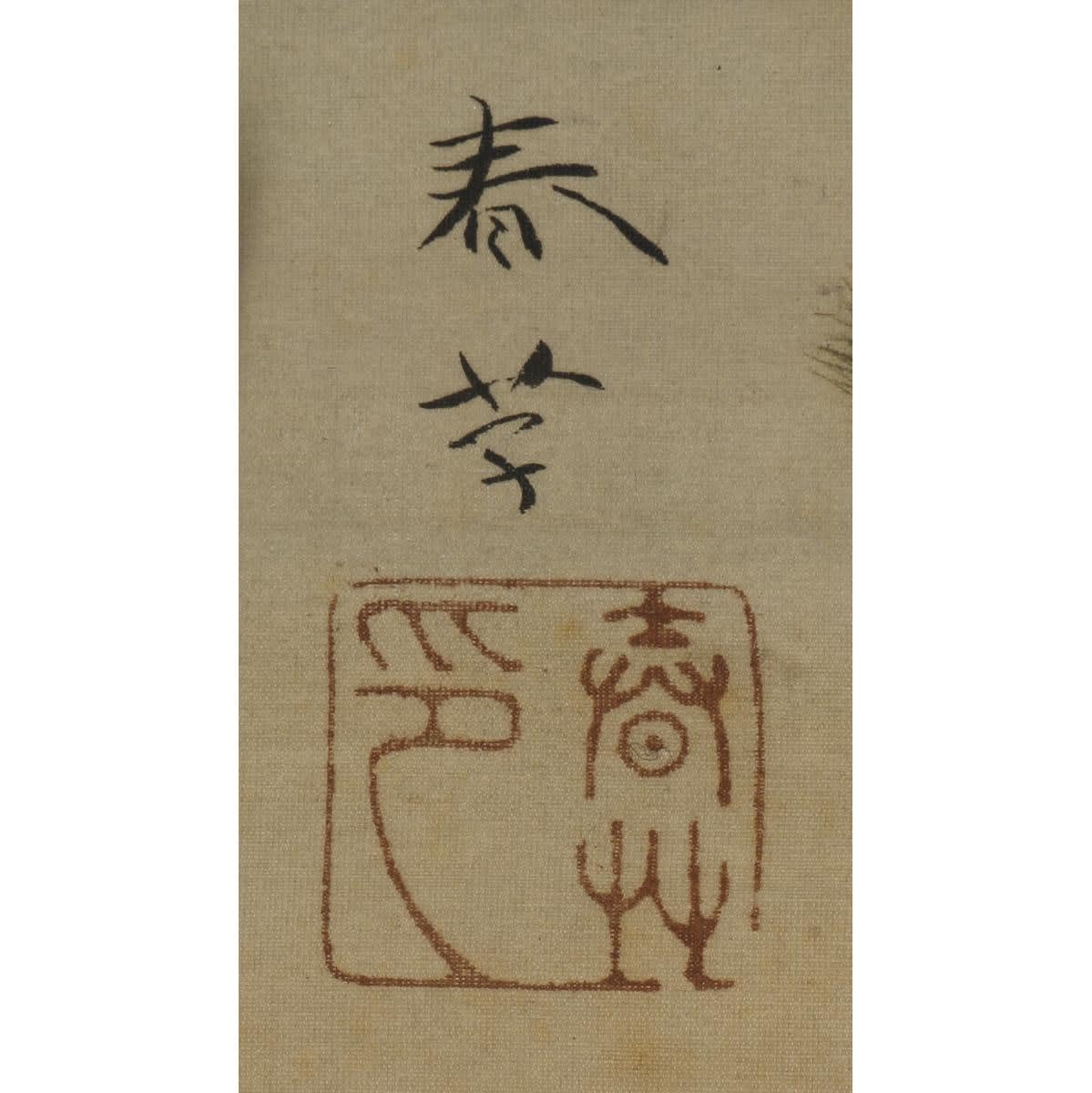Hishida Shunsō (1874–1911)
Sea at Dawn
Color and gold on silk, hanging scroll
With a Hishida Haruo certificate, box authentication by Yokoyama Taikan, double boxed
Seal: Shunso in
112 x 50 cm
213 x 66 cm (overall)
With a Hishida Haruo certificate, box authentication by Yokoyama Taikan, double boxed
Seal: Shunso in
112 x 50 cm
213 x 66 cm (overall)
Further images
Literature
Hishida Shunso zoku. Tokyo: Dai Nihon Kaiga Kogei Bijutsu, 1978.
According to Hishida Shunso zoku, a catalogue raisonné of Hishida Shunso, this painting was created in 1901. Three years earlier, in 1898, the scholar and art historian Okakura Tenshin had resigned from the Tokyo School of Fine Arts following an administrative dispute. Hishida Shunso also resigned and he subsequently devoted himself to the creation of novel nihonga paintings as a pivotal member of the newly-established Japan Art Institute. During this time, Tenshin challenged his students to find new ways to depict air. In response, Shunso and his fellow painter Yokoyama Taikan developed a technique that eschewed traditional line drawing in favor of gradations of color. This was a totally new way of painting nihonga. It involved dripping pigments on dampened silk and spreading them across the surface using a dry brush. Dubbed moro-tai, or hazy style, this innovative technique is on full display here. This work masterfully depicts a hazy early-morning scene of sea fog and a distant island set against an expansive, blurred horizon. In contrast, the black pine and pine leaves in the foreground are painted more distinctly to lend them a certain heft. All this imbues the painting with a strong sense of depth. A boat also powers through the water leaving white waves in its wake. Though we cannot see the fishermen frantically rowing away, the boat’s unusually large size gives it a wonderfully-unique sense of presence.
Hishida Shunso (nihonga painter; 1874−1911)
Nagano-born nihonga painter. His real name is Mioji. Studied under Hashimoto Gaho at the Tokyo School of Fine Arts. Became a teacher of the school after his graduation. Known as one of the elite four disciples of Gaho together with Yokoyama Taikan, Shimomura Kanzan, and Kimura Buzan. Contributed to the modernization of nihonga with a technique of depiction without lines, called moro-tai (“hazy style”).
Hishida Shunso (nihonga painter; 1874−1911)
Nagano-born nihonga painter. His real name is Mioji. Studied under Hashimoto Gaho at the Tokyo School of Fine Arts. Became a teacher of the school after his graduation. Known as one of the elite four disciples of Gaho together with Yokoyama Taikan, Shimomura Kanzan, and Kimura Buzan. Contributed to the modernization of nihonga with a technique of depiction without lines, called moro-tai (“hazy style”).









